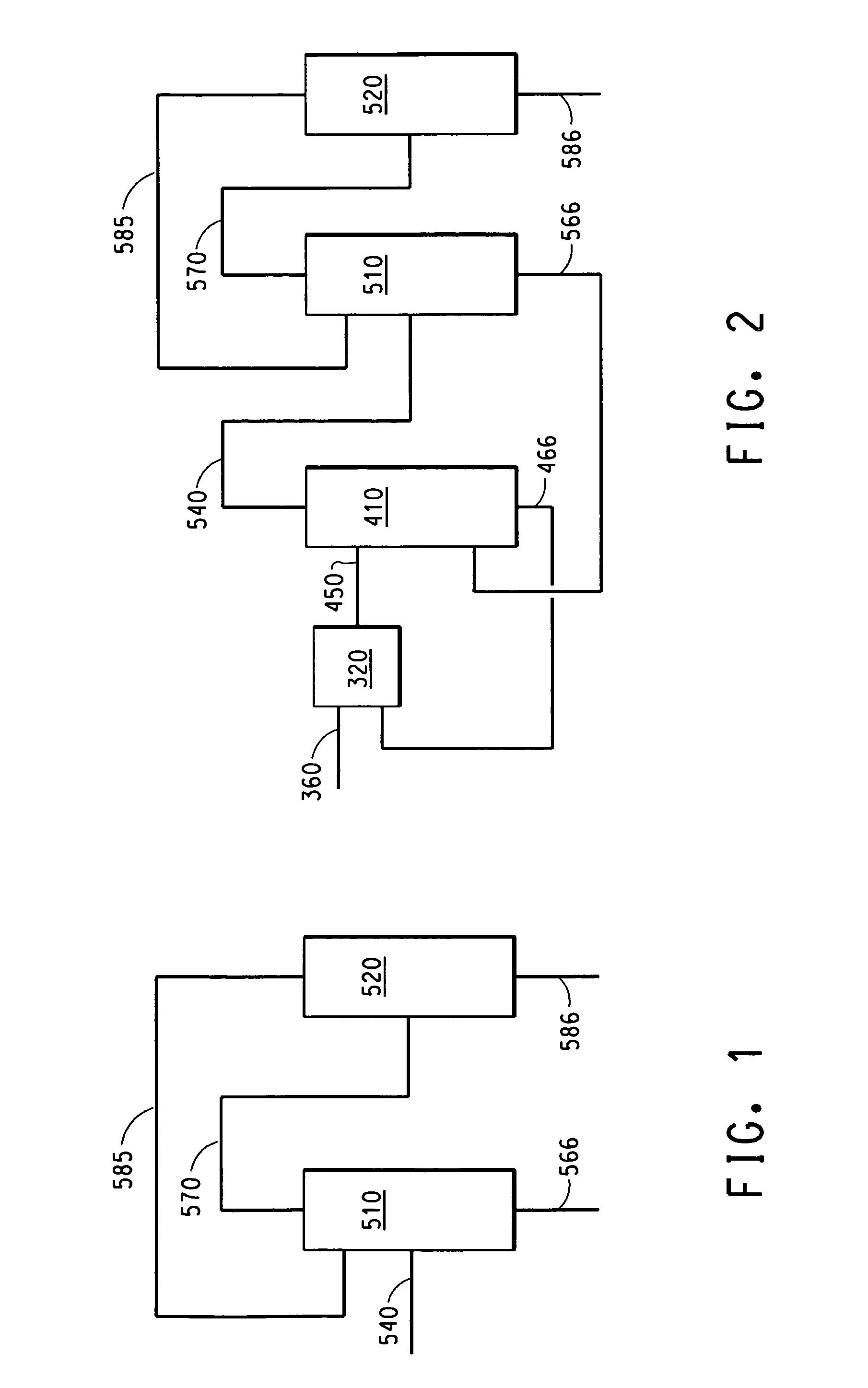Process for production of azeotrope compositions comprising hydrofluoroolefin and hydrogen fluoride and uses of said azeotrope compositions in separation processes
a technology of hydrofluoroolefin and composition, which is applied in the separation/purification of halogenated hydrocarbons, hydrogen halide split-off preparation, and complex mixtures which are difficult to separate, and achieve the effect of high selectivity
- Summary
- Abstract
- Description
- Claims
- Application Information
AI Technical Summary
Benefits of technology
Problems solved by technology
Method used
Image
Examples
example 1
Dehydrofluorination of CF3CH2CHF2 to CF3CH═CHF (E and Z Isomers) Over Carbonaceous Catalyst
[0112]A Hastelloy™ nickel alloy reactor (2.54 cm OD×2.17 cm ID×24.1 cm L) was charged with 14.32 g (25 mL) of spherical (8 mesh) three dimensional matrix porous carbonaceous material prepared substantially as described in U.S. Pat. No. 4,978,649, incorporated herein by reference. The packed portion of the reactor was heated by a 5″×1″ ceramic band heater clamped to the outside of the reactor. A thermocouple positioned between the reactor wall and the heater measured the reactor temperature. After charging the reactor with the carbonaceous material, nitrogen (10 ml / min, 1.7×10−7 m3 / s) was passed through the reactor and the temperature was raised to 200° C. during a period of one hour and maintained at this temperature for an additional 4 hours. The reactor temperature was then raised to the desired operating temperature and a flow of CF3CH2CHF2 and nitrogen was started through the reactor.
[0113...
example 2
Dehydrofluorination of CF3CH2CHF2 to CF3CH═CHF (E and Z Isomers) Over Fluorided Alumina Catalyst
[0115]A 15 in (38.1 cm)×⅜ in (0.95 cm) Hastelloy tube was charged with 7.96 grams (13 cc) of gamma-alumina ground to 12-20 mesh (0.84 to 1.68 mm). The catalyst was activated by heating at 200° C. for 15 minutes under a nitrogen purge (50 sccm, 8.3×10−7 m3 / s). The temperature was raised to 325° C. for 10 minutes, to 400° C. for 20 minutes, and then lowered to 300° C. for 60 minutes. The nitrogen flow was reduced to 35 sccm (5.8×10−7 m3 / s) and anhydrous HF vapor was fed at 12 sccm (2.0×10−7 m3 / s) for 35 minutes. The temperature was then raised to 325° C. for 60 minutes, to 350° C. for 60 minutes, to 375° C. for 90 minutes, to 400° C. for 30 minutes, and to 425° C. for 40 minutes. The nitrogen flow was then reduced to 25 sccm (4.2×10−7 m3 / s) and the HF raised to 20 sccm (3.3×10−7 m3 / s) for 20 minutes. The nitrogen flow was then reduced to 15 sccm (2.5×10−7 m3 / s) and the HF flow increased to ...
example 3
Dehydrofluorination of CF3CHFCHF2 to CF3CF═CHF (E and Z Isomers) Over Carbonaceous Catalyst
[0118]A mixture of CF3CHFCHF2 and nitrogen were passed through the reactor following the procedure of Example 1. The results of GC analysis of the reactor effluent are summarized in Table 5.
[0119]
TABLE 5ReactorGC Area PercentTemp.CF3CHFCHF2N2 feedZ-E-(° C.)feed (mL / min)(mL / min)CF3CF═CHFCF3CF═CHFCF3CHFCHF2Unks20010200.03ND99.97ND25010200.20.0399.8ND30010201.40.2298.40.0135010205.40.9693.10.5400102038.19.051.71.1400101037.98.751.61.840010542.69.546.71.2400104013.22.571.612.7ND = not detectedUnks = unknowns
PUM
| Property | Measurement | Unit |
|---|---|---|
| temperature | aaaaa | aaaaa |
| temperature | aaaaa | aaaaa |
| temperatures | aaaaa | aaaaa |
Abstract
Description
Claims
Application Information
 Login to View More
Login to View More - R&D
- Intellectual Property
- Life Sciences
- Materials
- Tech Scout
- Unparalleled Data Quality
- Higher Quality Content
- 60% Fewer Hallucinations
Browse by: Latest US Patents, China's latest patents, Technical Efficacy Thesaurus, Application Domain, Technology Topic, Popular Technical Reports.
© 2025 PatSnap. All rights reserved.Legal|Privacy policy|Modern Slavery Act Transparency Statement|Sitemap|About US| Contact US: help@patsnap.com

